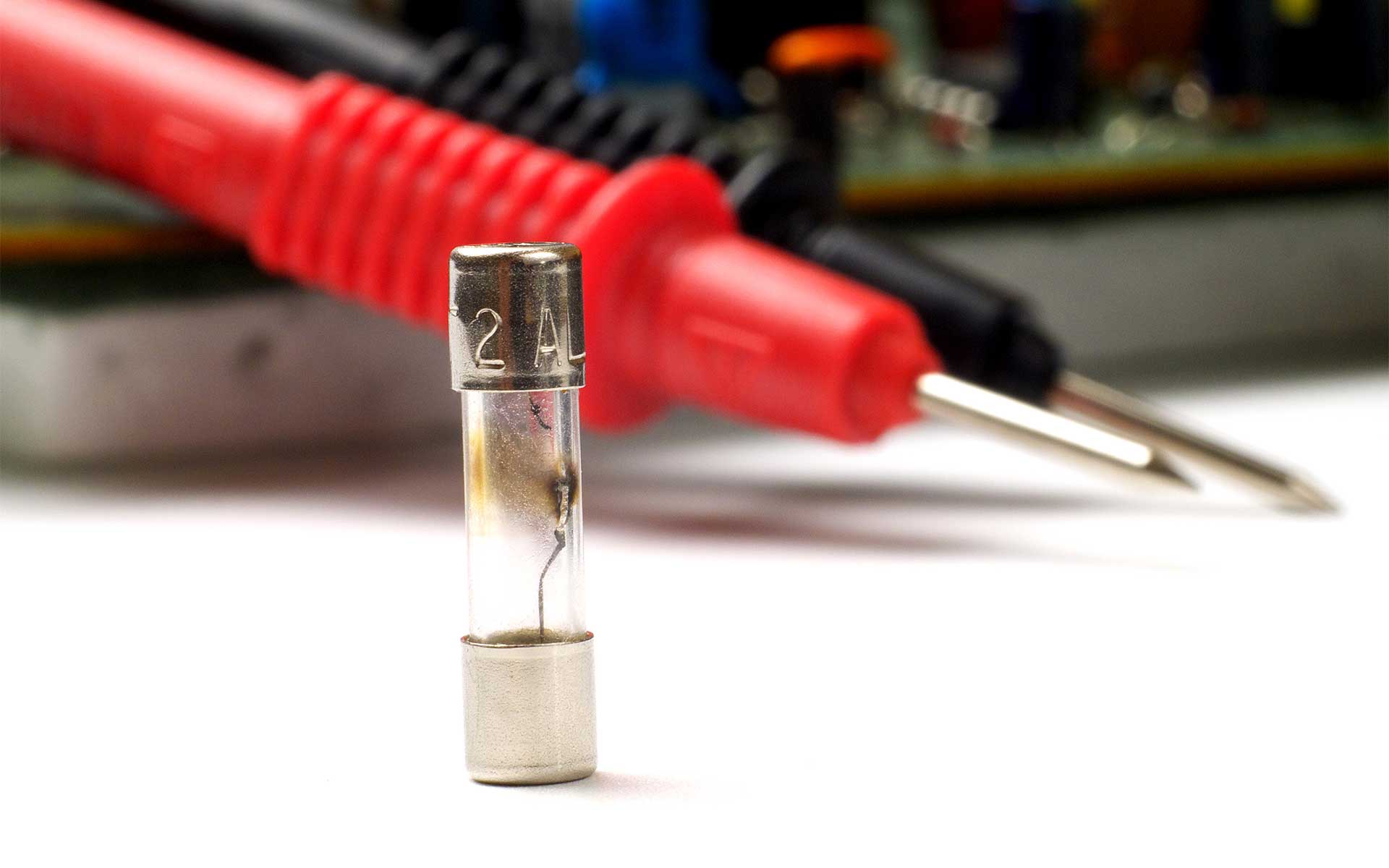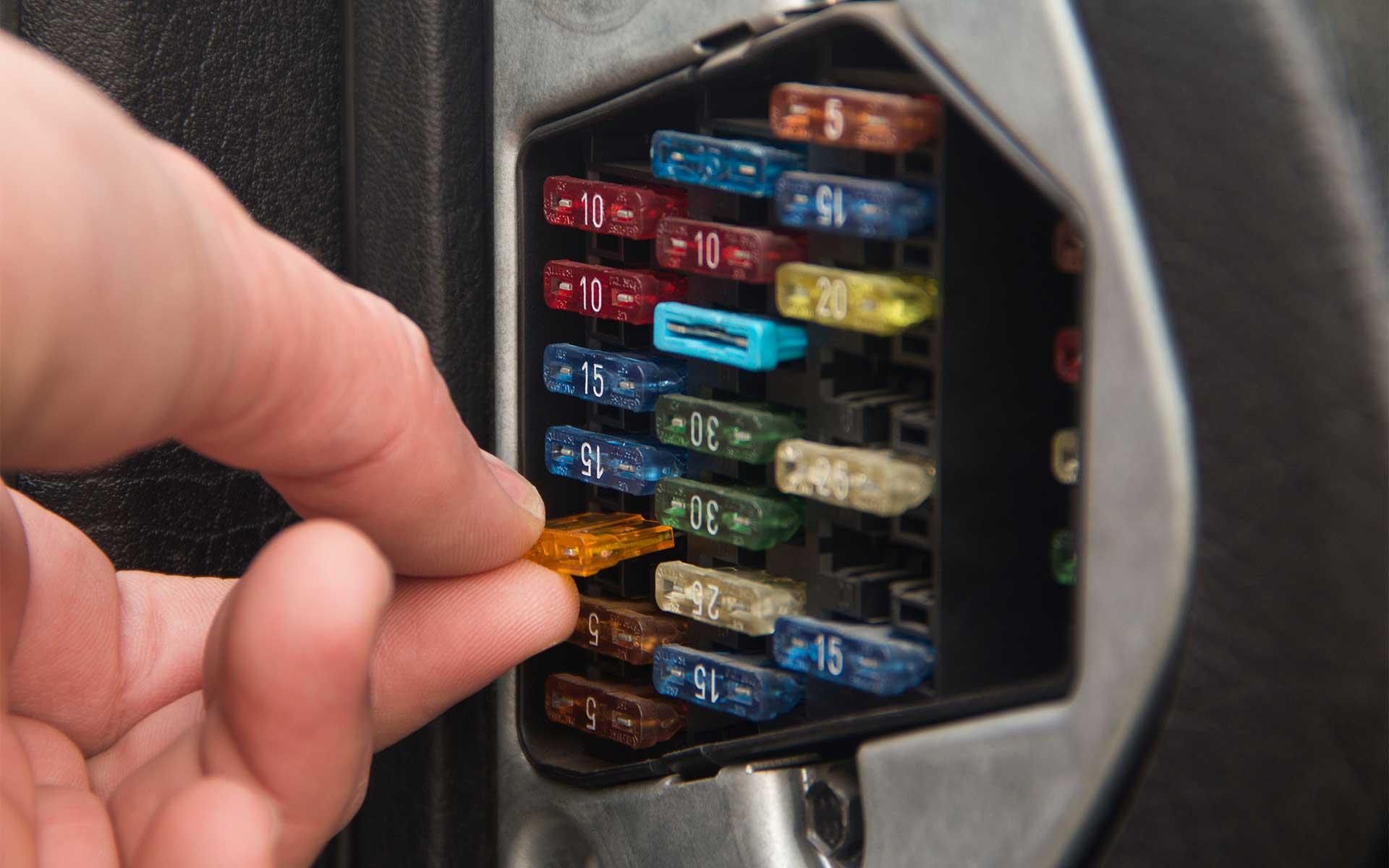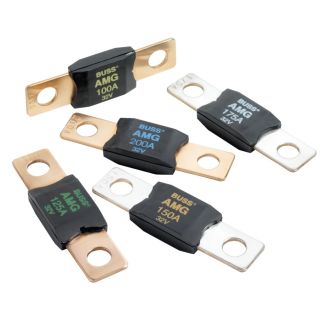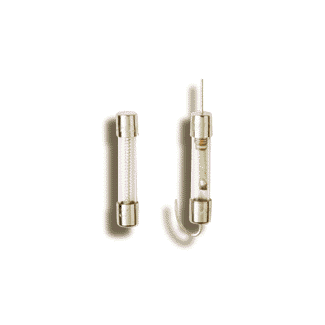Benjamin Franklin famously said, “An ounce of prevention is worth a pound of cure.” Although his words were about fire safety at the time, it’s easy to apply the adage to a fuse and its vital role in electrical equipment protection. Fuses are overcurrent devices that protect electrical and electronic devices from high voltage damage, such as an overload current or a short circuit current - and although fuses are small and inexpensive, the safety and peace of mind they provide are invaluable.
A fuse is an electrical safety component consisting of a strip of wire that self-destructs to break an electric circuit if the current exceeds a safe level. Under normal current circumstances, a fuse will allow the needed amount of current to flow through it. However, if too much current flows, the fuse will melt and cause an opening to break the harmful flow before it can damage the electrical equipment.
Despite its simplicity, a fuse’s function depends entirely on selecting the right type of fuse for the application. This article explains how to choose the right fuse for a circuit by detailing what parameters should guide your selection, including how to select fuse rating, how to choose fuse size, the importance of other applicable ratings, and more.
How Are Fuses Rated?
Proper fuse selection relies on several characteristics related to its rating, including voltage and current. These factors and more are critical to choosing a fuse that will safely protect electrical equipment from overcurrent damage. The following sections will discuss each characteristic involved in determining a fuse rating by explaining what it is and why it matters.


Voltage Rating
Each fuse will have a voltage rating indicated on its exterior, which will be a number followed by the letter “V” for voltage. The voltage rating is critical to your fuse’s operation, although it is only a factor when the fuse has “blown” or melted to open the circuit during an overcurrent event.
What Is Fuse Voltage Rating?
The voltage rating is the maximum voltage the fuse can safely handle when an overcurrent event occurs. The voltage rating on the fuse can be higher than the voltage present on the circuit, but not the other way around. If the fuse’s voltage rating is lower than the voltage supplied to the circuit, you risk damaging the equipment the circuit is supplying.
Current Rating
A fuse’s current rating is determined by the amount of current it will take to blow the fuse and open the circuit in an overcurrent situation. The current or amp rating is indicated on the fuse exterior, and it will include a number followed by the letter “A” for amps. So, for example, if a fuse has a 5A rating, the fuse will blow if the current that flows through it exceeds 5 amps.
Understanding and knowing how to determine a fuse’s current or ampere rating is critical, and we will cover how to choose fuse ratings in more detail later in this article.
What Is Current Rating?
The current rating for fuses is measured in amps, which is the unit used to measure electrical current. The current rating is basically the maximum current (in amps) that can flow through the fuse under normal conditions without melting the fuse and breaking the current. The fuse current rating is established by the manufacturer and determined through a series of controlled tests.
Interrupting Rating
A fuse interrupting rating is usually indicated with the symbols IR for “interrupt rating” or A IR for “amperes interrupt rating.” The interrupting rating is essential to consider when choosing a fuse because it indicates the maximum overcurrent a fuse can safely operate under without causing catastrophic failure, like an explosion or fire.
What Is Interrupting Rating?
The interrupting rating, also commonly called the breaking capacity or short circuit rating is a safety rating that communicates the maximum amount of current the device can safely withstand. Fuses in compliance with UL/CSA/ANCE 248 must have an interrupting rating of 10,000 amperes at 125V.
Temperature Derating
Temperature derating is important because fuse reliability can increase or decrease as the ambient temperature (average temperature) around the fuse increases or decreases. For this reason, fuse manufacturing standards in the U.S. require a controlled temperature environment of 25° Centigrade (or C) when testing fuses for ampere or current ratings.
What Is Temperature Derating?
Temperature derating is a technique used in electrical applications that shows how a rating stated at a particular temperature, such as 25°C, is reduced at higher temperatures. The current rating of a fuse is typically derated by 25% (or .75) for operation at 25ºC to avoid nuisance blowing.


Melting Integral (I2t)
In the electrical industry, the melting integral of a fuse is commonly referred to as I2t, which translates to “Current Squared Times Time,” where “time” refers to the length of the surge. This rating ensures that the heat created across the fuse during an overcurrent or surge has insufficient time to jump or arc to external circuitry.
What Is Melting Integral?
The melting integral is the thermal energy required to melt or “blow” a specific fuse element. The melting integral (I2t) is determined for each fuse design through extensive laboratory testing in a controlled temperature environment. The higher the Melting Point (I2t) in electrical applications, the longer the fuse will take to engage or “blow.” Ideally, a fuse should have a minimum I2t that is greater than the starting or inrush current energy.
Maximum Circuit Fault Current
The maximum fault current helps determine the required interrupting capacities of overcurrent protective devices like fuses. When installing electrical equipment along a circuit, it’s critical to ensure the maximum available fault current is less than the interrupting rating of the equipment at the point of installation.
What Is Maximum Circuit Fault Current?
In electrical applications, the maximum circuit fault current is calculated based on utility feed information and impedance, such as wire size or wire length, through the system. Maximum circuit fault current calculations are recommended for all critical points in the electrical system, especially the entrance (such as a control panel).
Required Agency Approvals
In the U.S., electrical equipment is monitored on federal and local levels. On the federal level, electrical equipment used in the workplace must be certified by a Nationally Recognized Testing Laboratory (NRTL) before being sold. Locally, the authority having jurisdiction (or AHJ) is typically a fire marshal, a governmental electrical inspector, or a third-party inspection agency, and they are responsible for overseeing the safety compliance of installed electrical equipment.
Mechanical Considerations
There are also mechanical considerations when choosing a fuse for your electrical application, such as size and the type of mounting required. Electrical fuses are available in a variety of styles and shapes. There are no standard fuse sizes, but some package sizes are common. Therefore, you will need to select the fuse size to fit the fuse holder within the application.
How To Choose Fuse Amperage?
If you are stumped by how to choose a fuse rating for your application, then you can rely on some simple calculations to guide your decision. First, you will need to determine the maximum fuse rating in amperages by applying this formula for calculation: P (Watts) ÷ V (Voltage) = I (Amps). Next, you will need to calculate the minimum fuse rating or amperage by multiplying that total (the maximum amperage rating) by 125%.
Once these two values are established, then choose a fuse amperage that falls within the middle of these two numbers. This mid-range number or value will provide adequate circuit protection for most applications. At the end of the day, if you understand these formulas for how to choose fuse rating, you will be in good shape and ready to tackle your installation.
How To Choose the Right Fuse For a Circuit?
As you can see, there are many characteristics to consider when determining how to choose a fuse for a circuit that will sufficiently protect your electrical application. Although it seems like a lot of information, you are on the right track once you have determined what voltage and current ratings the circuit requires. However, don’t forget the temperature derating, which is 25% at room temperature.
Knowledge is power when it comes to competent fuse applications within a circuit. Understanding the characteristics of a fuse and why they matter in circuit protection can be extremely helpful when determining how to choose the correct fuse for optimal circuit protection. However, it's important to carefully review any electrical application's appropriate standards and guidelines before installation.
Now that you are an expert in fuse selection head to Peerless Electronics to pick up the right fuse for your application. We are an employee-owned company and experts in all aspects of electronics across various industries. We carry an extensive range of fuses and other electrical components - in stock and ready to ship - from the industry’s top-rated suppliers. Our fuse and other electronics experts are standing by to equip you with everything you need to confidently tackle any electrical project.




















































